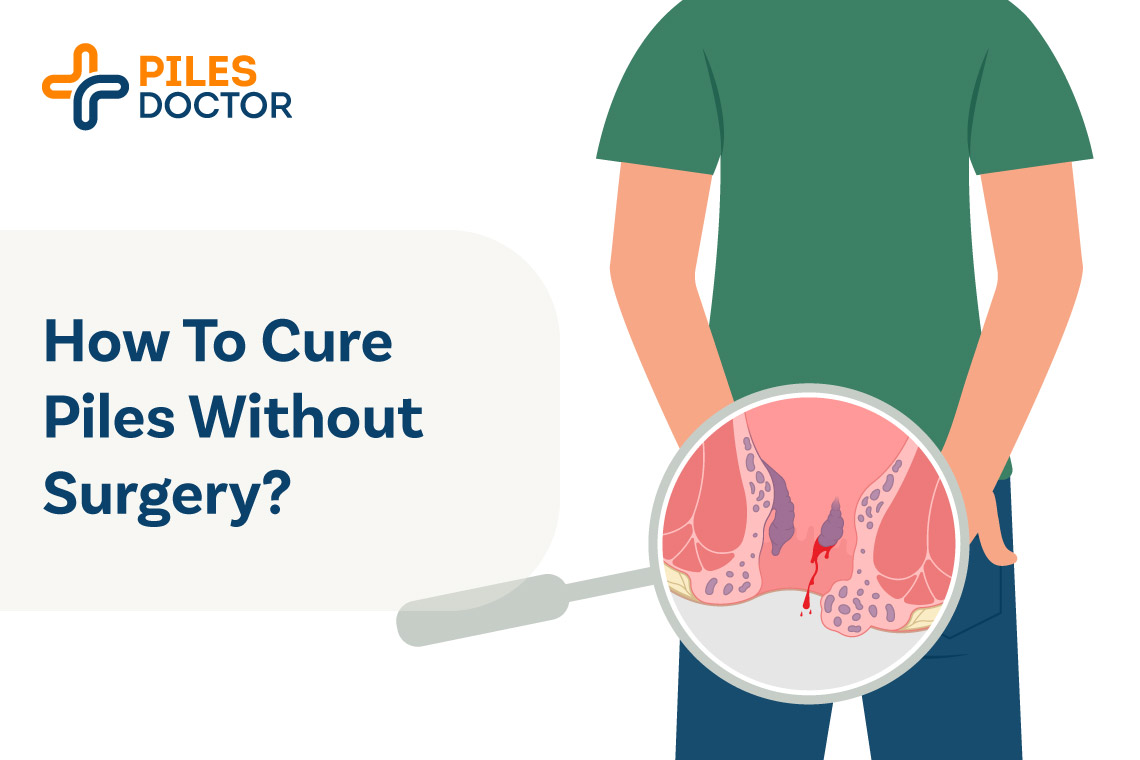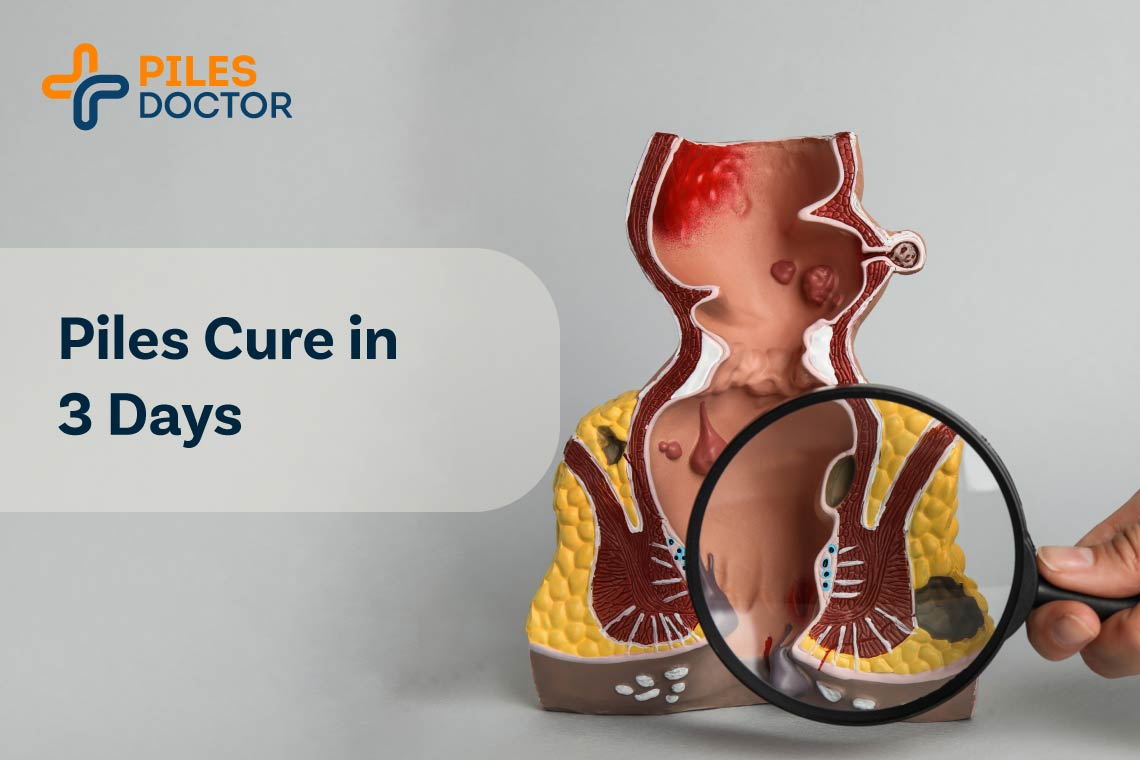Pilonidal sinus is a medical condition resulting from a cyst or abscess formation in the cleft of the buttocks. This condition tends to affect individuals who usually sit for extended durations and is more prevalent in men than women.
The condition develops in two forms – acute pilonidal sinus and chronic pilonidal sinus.
Acute pilonidal sinus is a one-time problem, and it doesn’t recur once treated. The most common symptom is pain and tenderness in the area around the natal cleft. The affected area may also be red and swollen. Acute pilonidal sinus is usually caused by an infection, which can be fungal or bacterial in nature.
Chronic pilonidal sinus persists over an extended duration and tends to worsen gradually. Its symptoms are largely similar to the acute form but often with increased intensity. In such chronic scenarios, there might be a formation of a small pocket or sinus discharging pus in the affected area. This condition can also lead to repeated infections, potentially resulting in abscess development.
Pilonidal sinus can be treated with medications and home remedies in the initial stage.
Surgical treatment for severe cases of pilonidal sinus is necessary to remove the sinus tract and prevent the recurrence of the condition.
How is Pilonidal Sinus Diagnosed?
An experienced proctologist can diagnose pilonidal sinus. During the consultation, the doctor may inquire about your health and medical history. Common tests are performed to confirm the diagnosis of pilonidal sinus.
Physical Examination: To identify a pilonidal sinus, your doctor will check the affected area for inflammation symptoms like redness, swelling, or soreness. They’ll also check for indications of infection, including any pus or discharge.
Imaging Tests: Your doctor might suggest ultrasound or MRI to better assess the condition and identify any potential complications.
Biopsy: If your doctor diagnosed that you have a pilonidal sinus, they might do a biopsy. In this procedure, a small piece of tissue from the area is taken and examined in a lab. This helps confirm if the cells are cancerous or not.
What is the Treatment of Pilonidal Sinus?
Usually, surgery is recommended for pilonidal sinus due to its recurrent nature. The surgery is performed to remove the infected tissue and prevent new pilonidal sinuses from developing. There are various treatment methods to treat pilonidal sinus.
- Lancing – During lancing, the doctor makes a minor cut in the affected area to drain the abscess, easing pain and discomfort. This procedure can be done at a clinic and usually involves wound care and antibiotics afterward. Lancing is a common method for treating pilonidal sinus, especially if conservative methods haven’t worked.
- Open surgery for pilonidal sinus- There are two common types of open surgery- incision-drainage and pilonidal cystectomy.
- Incision and drainage – This is a commonly performed procedure for pilonidal sinus. In this procedure, a minor cut is made to release the pus from the abscess, reducing pain and preventing infection spread. The wound might be covered with gauze or left to heal naturally. Doctors often prescribe antibiotics to ensure the infection doesn’t recur.
- Open pilonidal cystectomy – Open pilonidal cystectomy is a common procedure to treat pilonidal sinus. In this method, a cut is made over the cyst, followed by its removal along with the nearby tissue. Then, the pus is drained.
Depending on the cyst’s size, the area will be packed with surgical gauze. If the infection is extensive, a tube may be inserted to drain the cyst’s fluid. This tube is taken out once all the fluid is drained, helping prevent the cyst from returning.
- Laser pilonidal sinus treatment – Pilonidal sinus laser treatment is a less invasive method that effectively addresses the condition. Using laser energy, the sinus tracts are treated with minimal cuts, leading to quicker recovery and fewer complications. Patients typically resume regular activities in just a few days.
After the surgery, it’s important for patients to keep the surgical site clean and dry to avoid infections and help with healing. Pain relief will be provided to ease any discomfort. With the right care, most patients should recover fully within a week.
What are the Benefits of Pilonidal Sinus Laser Surgery?
Pilonidal sinus laser treatment offers various benefits, including;
- Minimally invasive: Pilonidal sinus laser surgery is less invasive, causing less pain and bleeding.
- Outpatient procedure: It’s an outpatient procedure, meaning there’s no need for a hospital stay.
- Quick healing: Recovery is faster than with traditional methods.
- Lesser risks of infection: Fewer incisions mean a lesser risk of post-surgical infections.
- Lesser chances of recurrence: The procedure offers a lower likelihood of the issue returning compared to traditional surgeries.
- No or less scarring: Smaller incisions during the procedure result in reduced scarring.
- High success rate: Laser surgery consistently achieves successful outcomes in treating pilonidal sinus.
- Accuracy: The laser technique offers precise treatment for pilonidal sinus issues.
- Cost effective: Laser surgery tends to be cost-friendly, needing fewer hospital resources and often eliminating the need for follow-up procedures.
How to Prepare for the Pilonidal Sinus Surgery?
Here are some tips to help you prepare beforehand for the pilonidal sinus laser surgery.
- Consult with your surgeon and get all your queries answered about the condition, procedure, benefits, risks and complications etc.
- Inform your doctor if you are taking any medicines or blood thinning supplements such as warfarin, ibuprofen etc. You should stop taking such medicines as they can lead to excessive bleeding during the procedure.
- Avoid eating anything midnight before the surgery as it can adversely react with the anesthesia during the procedure.
- Take a bath properly and clean the anal area properly and avoid applying any ointment or cream over it.
- During the consultation, your doctor might recommend a specific diet to follow before the surgery to ensure a smooth process.
- Avoid smoking and alcohol consumption at least 2-3 weeks before the surgery.
How to Recover After Pilonidal Sinus Surgery?
After pilonidal sinus laser treatment, proper self-care at home is important to ensure a successful recovery. Here are some guidelines to follow post-surgery.
- Follow your doctor’s instructions: Your doctor will provide guidelines for wound care and pain management. It’s crucial to follow these instructions to prevent any post operative complications.
- Keep the wound clean and dry: Make sure to clean the surgical site to avoid infection. Your doctor will instruct you on the proper cleaning method and recommend products to use.
- Change dressings regularly: You must change your wound dressings regularly to keep the area clean and dry.
- Avoid physical activity: Refrain from strenuos physical activity for 6-8 weeks post-surgery to ensure proper healing.
- Take pain medication as prescribed: Your doctor will prescribe over-the-counter medication to manage any discomfort you may experience. It is essential to take the medication as prescribed.
- Watch for signs of infection: Make sure to check the signs of infection, such as redness, swelling, warmth, or drainage from the wound. It is important to consult your doctor if you are experiencing any unusual symptoms after the procedure.
- Eat a balanced diet: Maintaining a healthy diet will allow your body to heal faster and promote overall wellness.
- Get plenty of rest: Your body needs proper time to heal, so make sure to get plenty of rest.
- Attend follow-up appointments: Your doctor will schedule follow-up visits to monitor your recovery and ensure that you are healing correctly. Attend these appointments as scheduled.
- Be patient: Recovery after pilonidal sinus surgery takes time, so be patient and allow your body to heal at its own pace.
What Lifestyle Changes Need to Make After Pilonidal Sinus Surgery?
Following pilonidal sinus surgery, adopting certain lifestyle adjustments can enhance the success of the procedure. Here are key recommendations post-surgery:
- Maintain cleanliness on the surgical site: Ensure the surgical site remains clean and dry to prevent infections. Shower regularly, using mild soap to gently cleanse the region, and avoid strong or abrasive products.
- Listen to your doctor: Make sure to follow the aftercare guidelines given by your doctor for the operated area, including dressing-changing instructions. This ensures a smooth recovery.
- Limit prolonged sitting: Try not to sit for too long, as it can strain the surgical site and delay healing. Take short breaks and walk around to maintain blood circulation and promote healing.
- Maintain a balanced diet: Eating well with a mix of fruits, vegetables, grains, and proteins aids in quicker recovery post-surgery.
- Limit heavy activities: Avoid activities like lifting or rigorous exercises that could strain the surgery area until your doctor advises otherwise.
- Stop smoking: Smoking can hinder healing and raise the chance of post-surgery issues. It’s best to quit before and maintain it post-surgery.
By adopting these lifestyle modifications, you can ensure a quick and safe recovery after pilonidal sinus surgery. It is important to follow your doctor’s instructions and make sure to consult them if you experience any complications.
What are the Risks and Complications Associated with the Pilonidal Sinus Laser Surgery?
Although pilonidal sinus laser treatment is generally safe, there are some risks and complications associated with the procedure, including:
- Infection: Like any other procedure, laser pilonidal sinus surgery also carries a potential risk of infection. Without proper care, the surgical area might get infected, which needs immediate attention.
- Bleeding: Post-surgery, there might be some bleeding at the operation site. In certain instances, the bleeding might intensify and demand further treatment.
- Pain: It’s not uncommon to experience pain after pilonidal sinus surgery. This discomfort can range from mild to acute and might persist for several weeks.
- Scarring: The surgery could result in scarring at the operated site. These marks might not be aesthetically pleasing and could lead to discomfort.
- Numbness: Post-surgical numbness is also a possibility. This sensation loss might last for a short period or could be permanent, affecting the skin and tissues nearby.
- Allergic responses: Some individuals might react adversely to the anesthesia or other medicines administered during the operation. This situation can lead to severe issues and demands swift medical care.
- Blood clotting: The procedure for pilonidal sinus can elevate the chances of forming blood clots in the legs or lungs, which is a critical concern that necessitates urgent medical intervention.
- Reverse effect of anesthesia: While anesthesia is essential during the surgery to avoid discomfort, sometimes it might cause a reverse effect and cause nausea, vomiting and dizziness after the procedure.
Overall, pilonidal sinus surgery is generally safe, but there are some risks and complications associated with the procedure. Patients should have a proper understanding of these risks before undergoing surgery and should discuss any concerns with their doctor.
What is Pilonidal Sinus Treatment Cost in India?
The pilonidal sinus laser treatment cost typically lies between INR 40,000 and INR 55,000 and the cost for open surgery lies between INR 35,000 and INR 80,000. However, the final expense for the pilonidal sinus surgery can vary for each patient due to factors like hospital stay costs, surgeon’s charges, fees for diagnostic tests, the specific nature of the condition, the chosen surgical method, anesthesia costs, anesthesiologist’s fee, and subsequent follow-up visits.
Is Pilonidal Sinus Covered Under Health Insurance?
Usually, health insurance companies cover pilonidal sinus surgery costs in India, but it is better to ask your insurance provider about your policy coverage. If you have insurance and choose Pristyn Care for pilonidal sinus surgery, then our dedicated insurance team can help you in claiming your insurance on your behalf and let you free to be prepared for the procedure.
What are the Signs and Symptoms that Pilonidal Sinus is Healing?
There are several post-operative symptoms that indicate that you are healing after the procedure.
- Decrease in Pain: Reduction in pain is one of the most notable sign of healing pilonidal sinus. If you are experiencing less intense pain and less frequent, it is a good sign that you are recovering properly.
- Reduction in Swelling: It is a clear indication of a healing pilonidal sinus if there is a reduction in swelling.
- Reduced Discharge: The amount of discharge from the sinus is another sign of healing. If the amount of discharge is decreasing, it is a sign that the wound is healing.
- Formation of Granulation Tissue: The formation of granulation tissue is a sign that the body is healing the wound. Granulation tissue is a pinkish-red tissue that forms at the base of the wound.
- Reduced Redness: If the skin around the sinus is becoming less red, it is a sign that the wound is healing.
- Reduction in burning sensation: If the burning sensation around the pilonidal sinus is decreasing, it is a sign that the wound is healing.
What Happens if Pilonidal Sinus Left Untreated?
If pilonidal sinus is left untreated, it can lead to a number of complications, including:
- Infection: The pilonidal sinus is a cavity filled with skin, hair, and debris. Without timely pilonidal sinus treatment, the infection within it can spread to other body areas, and can lead to various health issues.
- Abscess: In some cases, the infection might result in the development of an abscess, which is like a pus-filled pocked, tender to touch. Managing it can be challenging, and another surgical intervention might be necessary.
- Fistula: Untreated pilonidal sinus may also lead to fistula. An anal fistula is an unusual tunnel that develops between two organs inside the body.
- Chronic pain: Even if the infection doesn’t spread or lead to an abscess or fistula, pilonidal sinus can cause chronic pain and discomfort. This can make it difficult to sit or engage in physical activity.
- Recurrence: If the pilonidal sinus is not treated properly, it is likely to recur. This means that the infection, abscess, or fistula can return even after pilonidal sinus treatment.
Overall, it is important to seek medical attention if you suspect you have pilonidal sinus. Timely pilonidal sinus treatment can help prevent complications and improve your overall health and quality of life.
What are the Dietary Restrictions After Pilonidal Sinus Surgery?
If you have a pilonidal sinus, it is essential to follow a healthy diet to promote healing and prevent complications. Here are some foods you should include in your diet:
- Add fiber rich foods to your diet, such as whole wheat bread, fresh fruits, and vegetables, to prevent constipation and lessen the strain on the pilonidal sinus.
- Lean sources of protein, including eggs, lentils, salmon, poultry, seafood, and tofu, are helpful during recovery period.
- Omega-3 fatty acid-rich foods, like salmon fish and walnuts, can help reduce in inflammation and boost your recovery.
- Foods rich in Vitamin C, including oranges and broccoli, strengthen the immune system and aid in recovery.
- Probiotic-rich foods, like yogurt and sauerkraut, promote a healthy digestive system and help prevent infections.
- Both garlic and onions have properties that fight against harmful microbes.
- Adding turmeric to dishes is beneficial due to its known anti-inflammatory properties.
- Ginger, known for its anti-inflammatory properties, can be consumed as tea or added to meals.
- Foods rich in zinc, such as chickpeas, lamb, and cashews, aid in wound recovery.
- Iron-rich foods, including lentils and poultry, support wound healing.
- Avoid highly processed and sugary foods as they can weaken the immune system and increase inflammation.
- Limit alcohol consumption since it can slow down the healing process.
- Drink plenty of water to stay hydrated throughout the day to promote healing.
- Avoid foods you’re allergic or sensitive to as they can worsen symptoms and delay recovery.
FAQs
How long will it take to recover after the pilonidal sinus surgery?
Complete recovery might take around 7 days after pilonidal sinus laser surgery but you can return to your normal routine with 1-2 days after the procedure.
What are do’s and don’t after pilonidal sinus surgery?
Do’s after pilonidal sinus surgery:
- Keep the surgical area clean and dry to prevent infections.
- Follow your doctor’s post-operative care instructions closely.
- Use a soft cushion or pillow while sitting to reduce discomfort.
- Wear loose-fitting clothes to minimize friction on the surgical site.
- Take prescribed medications on time, especially pain relievers and antibiotics.
Don’ts after pilonidal sinus surgery:
- Avoid sitting for prolonged periods to prevent pressure on the wound.
- Avoid heavy lifting and strenuous activities until fully healed.
- Don’t take baths; opt for showers to keep the wound dry.
- Avoid scratching or touching the surgical area.
- Avoid swimming until the wound has completely healed.
How serious is a pilonidal sinus?
Although pilonidal sinus is not a life-threatening condition, but it may result in complications such as intense pain, swelling and infection or abscess around the anus.
Do pilonidal cysts go away on their own?
In rare cases, the infection may drain without surgery but there are high chances of its recurrence. So, it is always recommended to opt for surgical intervention for the pilonidal sinus.
What is the best treatment for pilonidal sinus treatment?
Pilonidal sinus laser treatment is considered one of the best treatments for pilonidal sinus.
Is surgery necessary for the pilonidal sinus?
Surgery is often recommended for pilonidal sinus as it provides a definitive treatment, especially if the condition is recurrent or causes significant symptoms. Non-surgical pilonidal sinus treatments might provide temporary relief but may not completely resolve the issue.



